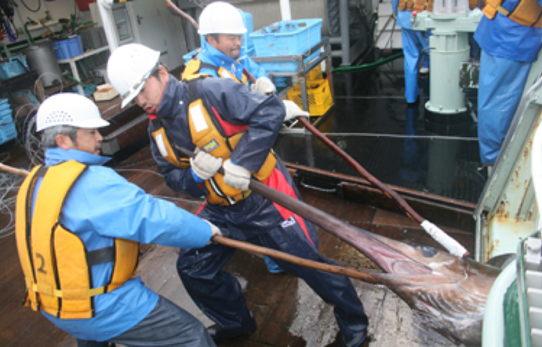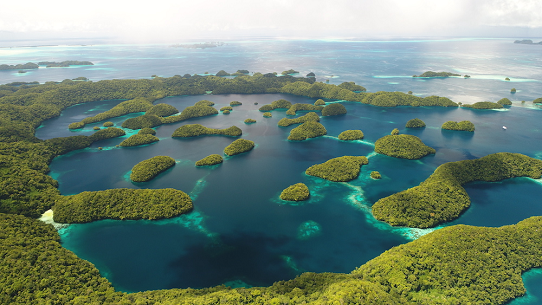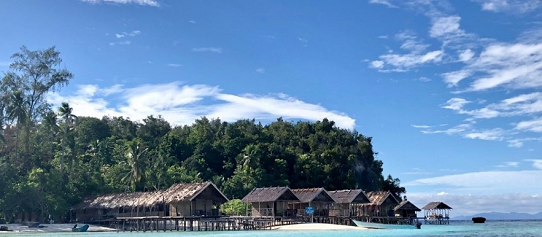导语 Introduction
关键点一
生多公约的保护目标中,面积百分比的目标往往受到更多关注,但是海洋保护质量与数量是同样重要的。本期的观点部分专门讨论了严格保护和允许利用的保护区在效益上的区别。学术部份继续关注与南极海洋保护相关的最新研究。
Highlight 1
The percentage area target for protection under CBD tends to receive more attention. However, the quality of marine protection is as important as the quantity. The Perspectives section of this issue discusses the difference in benefits between strictly protected and multiple-use protected MPAs. The academic section continues to focus on the latest researches related to marine conservation in the Antarctic.
关键点二
蓝色经济以及相关的管理和技术也是本期值得关注的内容。例如从控制捕捞重量改革为控制捕捞的个体数和个体的重量的捕捞管理新思路,尽管技术上可行性还不清楚,但是确实是很有意思的想法。此外还要推荐是2月发布以来受关注不足的重磅报告,2007年《斯特恩报告:气候变化经济学》的姐妹篇,《达斯古普塔报告:生物多样性的经济学》。相信这份报告会对CBD和生态文明建设相关的政策讨论提供有用的信息。
Highlight 2
The blue economy and related management and technologies are also of interest in this issue. For example, the new idea of reforming fishing management from controlling the weight of the catch to controlling the number of individuals caught and the weight of the individuals is certainly an interesting idea, although the technical feasibility is not yet clear. Also recommended is the major report that has received insufficient attention since its release in February, the Dasgupta Review: The Economics of Biodiversity. This report provides useful information for policy discussions related to CBD and the Ecological Civilization.
时讯 News

1)3月18日,日本启动第一个针对大青鲨和剑鱼的渔业改善计划,希望以此提高这两个物种的捕捞可持续性。
Japan launched its first blue shark and swordfish fishery improvement project (FIP) on 18 March, aiming for a more sustainable fishery on them.
2) 全球金枪鱼联合会公布《2025金枪鱼可持续捕捞承诺》,促进金枪鱼捕捞业的可持续发展。
The Global Tuna Alliance and others have announced their new sustainable tuna fisheries commitment, 2025 Pledge towards Sustainable Tuna (25PST), the latest effort to promote responsible global tuna fisheries management and harvesting.
3) “摩纳哥蓝色倡议” 的第十二次会议于3月22日至3月28日举行。会议重点讨论如何通过国际谈判来实现更高效的海洋治理;将海洋保护和可持续发展目标纳入企业应该承担的社会责任;以及在全球经济复苏下的蓝色金融与蓝色经济。
The 12th meeting of the Monaco Blue Initiative was held from 22-28 March 2021. It discussed topics including the role of international negotiation for better ocean governance, corporate social responsibility strategies, and blue finance.
4) 海洋科学家希望更新因气候变化而过时的太平洋鲑鱼种群与渔获模型,以提高预测的准确性。
Because of large differences in prediction and the actual number of catches as well as climate change, marine scientists have argued for a collective effort to update the models for the Pacific Salmon stocks and expected landings.
5) 墨西哥渔业专题会的讨论者认为,实现可持续捕捞将大大提升该国的环境和经济表现。
Getting Mexico's national seafood production certified as sustainable is the next significant step the country needs to take towards better environmental and commercial performance, according to participants in a panel focused on Mexico's seafood market during Seafood Expo North America Reconnect.
观点 Perspectives

1) Dan Laffoley & Dr. Sylvia Earle: “增加充分保护的海域迫在眉睫,需要将30%以上的海洋从有害活动中拯救出来,目前只有2.6%的海洋受到充分的保护。”
Dan Laffoley & Dr. Sylvia Earle: "There is a dire need to scale up to real protection, from the 2.6% of the ocean that is currently being afforded proper and full protection from harmful activities to at least 30%.
2)Remi Parmentier & Kelly Rigg: “制定海洋保护政策的四个新角度:a)海洋可开发区域 b):限制捕捞个体量而不是总捕捞重量 c):取消渔业的破坏性补贴和减少渔船队的数量 d):切断塑料废物进入生物圈的渠道。
Remi Parmentier & Kelly Rigg:" Four new approaches to policy to protect the ocean: a): Marine Exploitable Areas b): Numerical management c): Subsidies Elimination and Fishing fleets Disarmament Agreements d): Isolation of plastic litter from the Biosphere.
3) Ashley Braun:" 与被充分保护的海洋保护区相比,只受到部分保护的海洋保护区在生态上的价值和对激发公众对海洋的兴趣都是极为有限的。 “
Ashley Braun:" Compared to fully safeguarded marine protected areas, partially protected areas have little benefit for marine life or people's enjoyment."
4) Stewart Patrick: “美国不能对海洋的健康坐视不管。我们必须成为联合国公海生物多样性条约的领导者。”
Stewart Patrick:" U.S. cannot afford to ignore the health of oceans. It must spearhead the successful conclusion of negotiations on a U.N. high seas biodiversity convention."
5) Cayetana Aljovin & Erica Cunningham:“与不同的利益团体以及国家之间的合作是极为重要的,这也是一种在气候变化下管理渔业的新方式。”
Cayetana Aljovin & Erica Cunningham:" It is especially important as climate change impacts require a united front to combat them and a new way to manage fisheries."
6) Mel Cosentino & Lucrecia Priego: “解决海洋问题的办法在于创造性地将自然和社会科学相结合,以及听取相关利益团体的意见。”
Mel Cosentino & Lucrecia Priego:" This (solutions to ocean problems) can be achieved through innovative blends of natural and social sciences, with input from stakeholders."
解读 Interpretations

1) Island Innovation: 蓝色经济的意义
蓝色经济在继承低碳、高资源效率和高社会包容原则的同时,同时立足于不断发展中的情境,反映了以海洋为未来资源基础的国家的情况与需求。蓝色经济是一个重要的概念,它帮助发展中国家,特别是那些依赖海洋资源的国家,努力实现可持续发展目标,特别是可持续发展目标14:"为可持续发展保护和可持续利用海洋和海洋资源。
The Blue Economy endorses the same principles of low carbon, resource efficiency, and social inclusion, but it is grounded in a developing context and fashioned to reflect the circumstances and needs of countries whose future resource base is marine.
The Blue Economy is an important concept as it helps the developing countries, especially those relying on marine resources, in working towards Sustainable Development Goals, particularly SDG 14: 'Conserve and sustainably use the oceans, seas and marine resources for sustainable development.
2) DAVID KACZANANDRÉ RODRIGUES DE AQUINO: 四项措施帮助建设印尼海洋经济
海洋相关产业对印尼的经济发展十分重要。世界银行一份新的报告提出了四个方法以帮助印尼经济快速转型成绿色环保经济:1) 提高对海洋和沿海资源的管理,包括渔业,红树林,和珊瑚。2)增加对环境类的基础设施建设,比如排污管,污水处理设施。3) 更加有效的数据分析和监测 4)将政府短期的COVID-19经济复苏计划与长期的海洋保护计划相结合。
As a country heavily reliant on its ocean, Indonesia is in great need to transit its economy to be more sustainable. A new World Bank report, Oceans for Prosperity: Reforms for a Blue Economy in Indonesia, proposed four key methods to ensure a successful transition to a blue economy in Indonesia: 1. Improved management of marine and coastal assets (fisheries, mangroves, reefs) 2. Mobilize incentives and investments 3. Better systems for data collection and monitoring 4. Build back "bluer" from the Covid-19 pandemic
3) MIT Technology Review Insights: 那些可以拯救海洋的科学技术
全球有80%的海底地形图还有待绘测,地理信息系统有助于解决这一问题。全面的海底地形图对解决过度捕捞,栖息地的破坏,污染,和生物多样性的丧失起到极为重要的作用。一幅内容详尽的海洋地图也有助于提高公众对海洋问题的认知。
As more than 80% of the ocean floor remains unmapped, GIS can be important in mapping the ocean floor. Comprehensive ocean maps will play a critical role in solving problems such as overfishing, habitat destruction, pollution, and biodiversity loss. A detailed riched ocean map also raises people's awareness of many problems that the ocean is facing.
4) Desiree Ho 合成生物学是保护海洋生物的手段之一吗?
合成生物学上的新突破可能帮助保护因为人类需求增加而岌岌可危的海洋生物。举例来说,鲨鱼的肝油被用来提取鲨烯,而鲨烯现在是可以被合成的,这样就避免了对鲨鱼的捕捞。沙丁鱼这类食物链底层生物常常被用做鱼食来喂养其他大型鱼类。而现在,饲养鱼类的营养所需物质可以通过化学合成而获得,这样免去了过度捕捞小鱼对整个食物链的影响。
New synthetic biology innovations could help protect key marine populations, as a result of increasing demand for marine species. For example, man-made squalene is considered as a substitute for squalane in an actual shark, saving sharks from being slaughter. Another example is that replacing small fish like Sardines with similar nutrients avoids the disruption of entire ocean food chains.
5) 皮尤慈善信托基金会:保护海草的七个原因
保护海草的七个原因:1. 海草种类繁多,极具生态价值 2. 海草是生态系统的工程师 3. 海草为20%的鱼类提供了栖息地 4. 海草能让水质更加清澈并且减少侵蚀 5. 海草能够捕捉和储存空气中的二氧化碳 6. 海草可以减缓海岸侵蚀 7. 海草能够减轻气候变化带来的影响。
Seven reasons why we should protect seagrass: 1. Seagrasses are diverse 2. Seagrasses are "ecosystem engineers." 3. Twenty percent of the world's largest fisheries depend on seagrass 4. Seagrasses naturally improve water clarity 5. Seagrass captures and stores carbon 6. Seagrasses help protect shorelines 7. Seagrass is a nature-based solution to climate change.
学术 Academics
1)【气候与海洋】阻止从热带到南极的生态系统崩溃
[Climate change · Ecosystem] Combating ecosystem collapse from the tropics to the Antarctic
这篇文章关注了从澳洲的珊瑚礁到南极大陆跨越58个纬度总计770万平方公里的生态系统所遭受的环境破坏。生态系统对这些冲击的反应被划为四类(急性的、平稳的、阶梯型的、波动的)。同时,这篇文章也提出了三个步骤(察觉问题,预判问题,解决问题)来帮助减轻生态系统所受的冲击。
2)【 海洋生物】南极底栖生物的食物网呈现出纬度变化
[Marine biology] Latitudinal changes in the trophic structure of benthic coastal food webs along the Antarctic Peninsula
本文利用C和N元素的同位素(C-13,N-15)来研究海面冰期持续时间变化对南极底栖生物食物网的影响。研究者发现两种同位素的含量随着纬度变化。而通过C-13测量显示,这一改变对大型无脊椎动物影响很小。
3)【气候与海洋】 比较全球气候模型和区域气候模型:预测未来二十年南极的温度和降水
[Antarctic climate] Temperature and precipitation projections for the Antarctic Peninsula over the next two decades: contrasting global and regional climate model simulations
研究展示了在高排放量的情况下,两种不同的气候模型(GCMs和RCMs),对于未来二十年南极半岛的温度和降水的不同预测结果。在总体变化上两种预测结果大致相当,但在具体地方上降水和温度的预测都有差异,尤其是针对拉森冰架(Larsen Ice Shelf)。
4)【气候与海洋】塔斯曼海的水温可能导致南极半岛的暖冬
[Antarctic Climate] Antarctic Peninsula warm winters influenced by Tasman Sea temperatures
通过观测和模型数据,研究者发现塔斯曼海海水的升温影响了南大洋风暴的路径,从而导致阿蒙森低气压中心的增强,进而加强南极半岛的平流,最终导致南极半岛的变暖。
5)【气候与海洋】海洋酸化对亚南极地区的螔螺钙化的影响
[Marine biology] Effects of Ocean Acidification on Calcification of the Sub-Antarctic Pteropod Limacina retroversa
螔螺是亚南极地区分布最广的翼足目动物,并且在碳循环方面有着重要作用。这篇研究关注了在不同pH值下螔螺的钙化反应。
6)【划区管理】南极的高生物多样性区域应该得到保护
[Ocean Governance] Marine Important Bird and Biodiversity Areas for Penguins in Antarctica, Targets for Conservation Action
本文将企鹅在南极洲的分布与鸟类的分布相结合,试图识别对企鹅来说最重要的活动区域。除此以外,文章还发现磷虾捕捞集中于生物多样性高的区域,其捕捞对其他生物也造成影响。研究认为应该在南极建立海洋保护区。
7)【气候变化·渔业】气候变化对大西洋岛国金枪鱼渔业的影响
[Climate Change · Aquaculture] Climate Change Impacts on Atlantic Oceanic Island Tuna Fisheries
本文重点关注气候变化如何影响英国在大西洋的海外领地的金枪鱼渔业。通过气候模型分析,作者试图识别出未来最适合金枪鱼生活的地方。
其他资料 Other resources
1)【海洋宏观】海洋健康指数
[Ocean in general] Ocean Health Index
专栏/Column
2)【生态分类】全球生态系统分类体系专题网站
[Ecosystem Typology]
专题网页/Feature page
3)专题:服务碳中和目标的海洋负排放技术路径与战略思考、哲学与科学丨【中国科学院院刊】2021年第3期发布
专题特刊/Special issue
4)【海洋宏观】"回归蓝色 “是一项倡议,旨在寻找海洋问题的解决办法,以及让海洋变得更健康和更加可持续。
[Ocean in general] Back to Blue is an initiative that aims to improve evidence-based approaches and solutions to the pressing issues faced by the ocean, and to restoring ocean health and promoting sustainability.
倡议/Initiative
5)【生物多样性】达斯古普塔报告:生物多样性的经济学
[Biodiversity] Economics of Biodiversity: The Dasgupta Review
报告/Report
活动 Events
>>预告 Upcoming Events
2021年04月12日 网络研讨会 荷兰在生物多样性,可持续发展目标方向上的投资
2021.04.12 Webinar Plenary 1: Taking Dutch responsible investing to the next level: biodiversity, the SDGs and clear impact outcomes 【25期】
详情/Detail
2021年04月20日 网络研讨会 阿拉斯加是如何达到渔业的可持续性捕捞
2021.04.20 Webinar Social Responsibility, Alaska’s Proactive, Global-Reaching Approach
详情/Detail
2021年04月20日 论坛 欧盟国际海洋治理论坛
2021.04.20 Forum The EU International Ocean Governance Forum
详情/Detail
2021年04月21日 网络研讨会 投资者能为保护生态多样性做些什么?
2020.04.21 Webinar How can investors take action on biodiversity? 【25期】
详情/Detail
2021年04月30日 网络研讨会 为什么我们需要在2030年前保护30%的海洋:海洋保护区背后的科学
2021.04.30 Webinar The “Why” Behind 30x30: The State of the Science on Marine Protected Area Benefits 【25期】
详情/Detail
2021年05月07日 网络研讨会 美国如何达到2030年前保护30%海洋的目标
2021.05.07 Webinar Planning for 30x30 in the US: Assessing Protection in US Waters 【25期】
详情/Detail
>>回顾 Recordings
2021年03月11日 网络研讨会 金融:利用对自然资源的投资来提高沿海地区的韧性
2021.03.11 Webinar Finance: Driving investment into natural capital to increase coastal resilience
详情/Detail
2021年03月22日- 25日 讨论会 通过更完善的渔业管理来达到气候&生物多样性的目标
2021.03.22-25 Symposium Delivering on Climate & Biodiversity Targets Through Better Fisheries Management
详情/Detail
2021年03月23日 网络研讨会 气候变化下海洋保护区如何改变来更好的保护自然资源
2021.03.23 Webinar Shifting MPAs for conservation and fisheries under a changing climate
详情/Detail
>>其他 Others
本快讯两周更新一期,往期内容可以查看这里。如果您在快讯内容或形式上有任何意见或建议,欢迎发邮件至ocean@ghub.org告诉我们,也欢迎您将《蓝色脉搏》推荐给同事和朋友。
题图:渔业捕捞,Seafood Legacy | 制。



